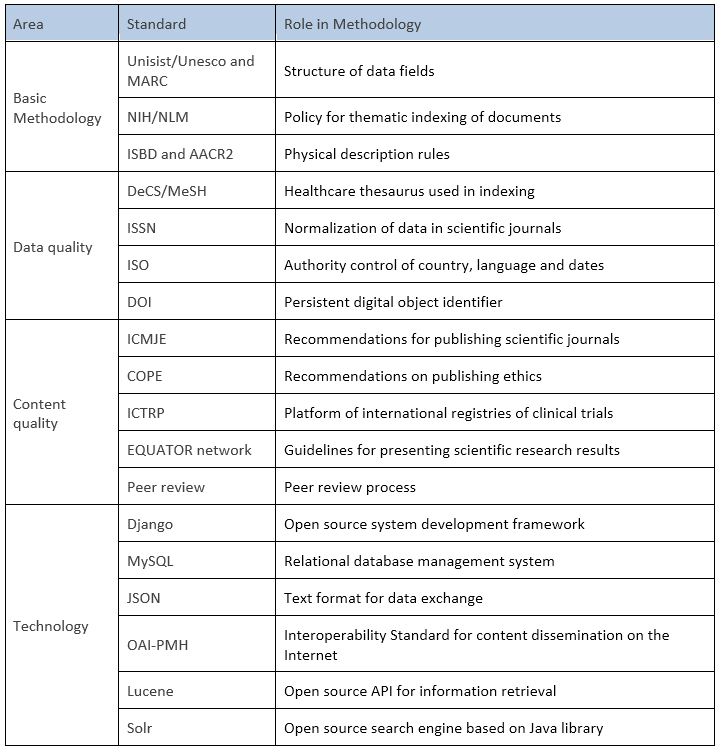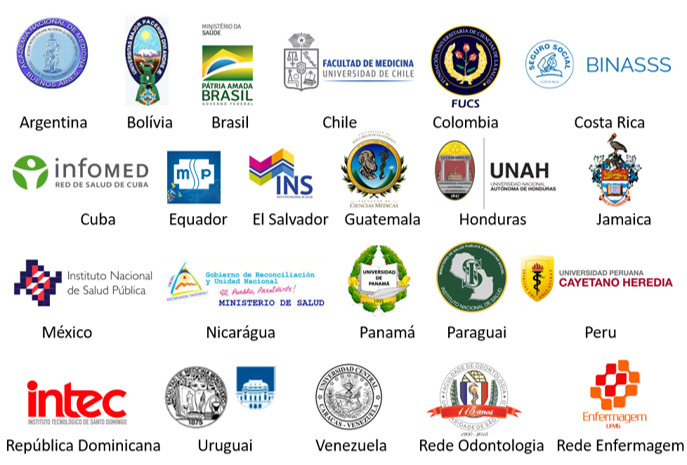The production of scientific information undergoes evaluations that aim at give legitimacy and validate its reliability and integrity. The indexing of scientific journals in databases such as LILACS (Latin American and Caribbean Literature in Health Sciences) is part of this process, as journals are evaluated based on selection and permanence criteria.
LILACS is a database coordinated by BIREME/PAHO/WHO that aims at increasing the visibility and democratize access to scientific output of Latin America and Caribbean countries and to fill the information and knowledge gap necessary to respond to local health demands, with its social, environmental, cultural, economic and ethnic aspects.
The LILACS criteria, which are part of the LILACS Methodology and are the basis for the process of evaluating journals for indexing, include the principles, international standards and editorial processes established such as registration of clinical trial studies, adoption of research results presentation guidelines , peer review and others, as shown in Table 1.

Evaluation and selection process of LILACS journals
The evaluation process aims to assess journals that comply with the current criteria for indexing in the database, to reevaluate the collection of journals and to decide whether to exclude or recommend improvements and to provide feedback on the adequacy and updating of the LILACS criteria adopted in the country and in the Region.
The evaluation is carried out in a decentralized process and each country constitutes a journal evaluation committee considering the following eight disciplines: Public Health including Nutrition, Clinical and surgical medicine, Pharmacy, Physical Education including Physiotherapy, Biomedical Sciences, and representatives from the areas of Nursing, Dentistry and Psychology.

BIREME/PAHO/WHO, together with the General Coordination of Documentation and Information of the Secretariat for Administrative Affairs of the Executive Secretariat of the Ministry of Health (CGDI/SAA/SE/MS), which leads the Brazilian Health Sciences Information Network , coordinates the evaluation process of LILACS journals. This action is formalized through an institutional relationship, currently in the context of the Cooperation Agreement 93 (TC93) for the improvement of BIREME regarding its management and technical cooperation in Brazil and in the countries of Latin America and the Caribbean.
The areas of Dentistry and Nursing have separate evaluation processes. The Dental Documentation Service of the Faculdade de Odontologia da Universidade de São Paulo evaluates journals in this area for the Bibliografia Brasileira de Odontologia – BBO and for LILACS in Brazil. The Nursing area is the only one that is carried out by its own committee at the regional level, as it has an international committee for the evaluation and selection of journals and evaluates titles according to the LILACS and BDENF criteria. The Brazilian evaluation process lasts about six months and can be found in detail on the LILACS journal evaluation page.
In addition to the selection of new journals, all those already indexed undergo a permanence assessment, in which it is observed whether the journal continues to abide by the LILACS selection criteria, if their publication has been delayed (those delayed more than one year are withdrawn from LILACS), those that are not sending records to LILACS (editors are contacted and advised) and if there are many records to be indexed (Cooperating Centers are alerted and advised).
Advances in LILACS selection criteria and evaluation process
At the end of October 2019, a new version of the criteria for the selection and permanence of journals in LILACS was revised and validated in a public consultation process (Figure 2,) and should be published soon. Best practices such as the publication of electronic journals in continuous flow with e-location, adoption and persistent identifiers such as DOI, for resources other than the full text and ORCID for authorship, the acceptance of journals that encourage and accept publication of preprints and research data are steps towards open science

In terms of the evaluation process of LILACS Brazil journals, the theme of peer review was widely discussed in the last meetings of the LILACS Evaluation and Selection Committee of Brazil and, with the support of members, the peer review forms and the Committee’s evaluation criteria have been updated to make them more qualitative.
The periodical evaluation system (Figure 3), implemented in August 2019, had a new development cycle and the navigability was improved and the evaluation of reviewers within the system was implemented as a way to facilitate the selection and management of and the new evaluation forms created with the Committee were implemented.

Finally, since 2019, monthly sessions on Good Editorial Practices for Scientific Journals have been offered, with the aim of promoting knowledge of fundamental topics of scientific publishing to improve the quality, positioning and visibility of journals. This space was enthusiastically received by the community of scientific editors and in the 2020 version it already addressed the implementation of electronic journals and will have open science (Session 8, which will take place on October 21, 2020) as one of the themes to introduce and guide the adoption of open science recommendations within the scope of LILACS indexed journals.